You still wonder how to get rid of rust on silver? Well, silver is a precious metal that has been used for coins, jewelry, and other decorative items for centuries. Sterling silver is an alloy of silver and copper, with the addition of a small amount of zinc. Silver is corrosion-resistant, so sterling silver does not rust. However, if it is exposed to sulfur-containing compounds, it can form black sulfide deposits on the surface. These deposits can be removed with a mild abrasive cleaner or polish.
Sterling silver can tarnish over time, especially when exposed to air and light. Tarnish is a thin layer of corrosion that forms on the surface of the silver. This happens because the copper in sterling silver reacts with oxygen and sulfur in the air. Tarnish is not harmful to sterling silver and can actually help protect it from further corrosion. However, many people prefer the bright, shiny look of freshly polished silver.
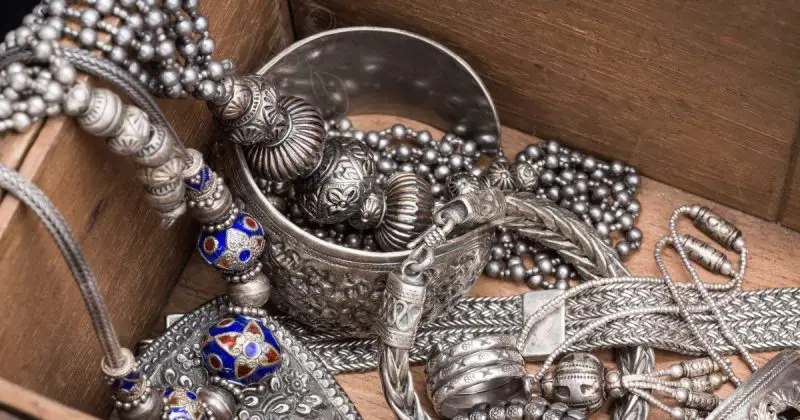
Corrosion: Rust vs. Tarnish
Rust is a type of corrosion that occurs when iron or steel is exposed to oxygen and water. The result is a reddish-brown, flaky deposit on the metal surface. Rust can cause serious damage to metal objects, making them weaker and more susceptible to breakage.
Tarnish, on the other hand, is a thin layer of corrosion that forms on the surface of sterling silver. Tarnish is caused by the reaction of sterling silver with oxygen and sulfur in the air. While tarnish does not cause any permanent damage to sterling silver, it can make the metal look dull and lackluster. Many people prefer to polish their sterling silver jewelry regularly to keep it looking its best.
Does Sterling Silver Rust?
Sterling silver will not rust, but it can tarnish over time. Tarnish is a thin layer of corrosion that forms on the surface of the silver. This happens because the copper in sterling silver reacts with oxygen and sulfur in the air. Tarnish is not harmful to sterling silver and can actually help protect it from further corrosion. However, many people prefer the bright, shiny look of freshly polished silver.
What is Sterling Silver?
Sterling silver is an alloy of silver and copper, with the addition of a small amount of zinc. Silver is corrosion-resistant, so sterling silver does not rust. However, if it is exposed to sulfur-containing compounds, it can form black sulfide deposits on the surface. These deposits can be removed with a mild abrasive cleaner or polish. Another way is to use a coin cleaning kit (we’ve got a guide for silver coins).
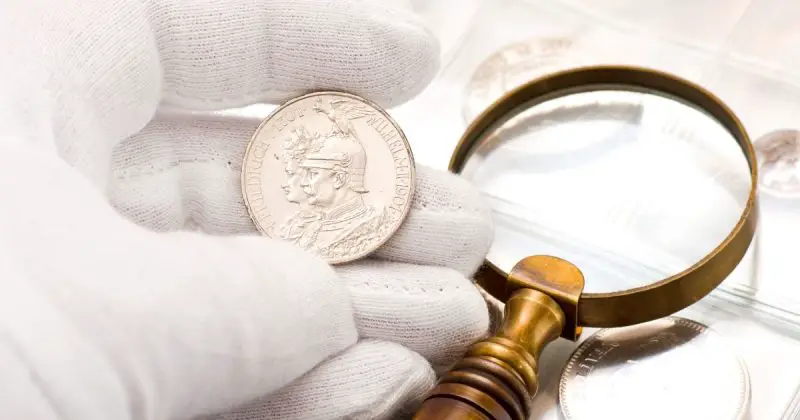
Sterling silver is 92.5% pure Silver with 7/8ths of an inch made up by zinc or copper to give it more durability than the brittle material, which can be easily damaged when bent under pressure and thus isn’t meant for everyday wear in most cases. The material is often used in high-quality jewelry, though it can also be found in tableware, flatware, and other household items.
This means that if you were planning on purchasing some new jewelry pieces today then this would not only come as good news but also provide great value since most other metals such gold prices typically sky-rocket during economic downturns because people flock towards buying something thats scarce rather then having their money wasted on something unneeded.
What is the Difference Between Sterling Silver and Silver?
The main difference between sterling silver and silver is that sterling silver is an alloy of silver and copper, while silver is a pure element. Sterling silver is more durable than silver, but it can tarnish over time. Silver does not rust, but it can tarnish over time especially when exposed to air and light.
Tarnish is a thin layer of corrosion that forms on the surface of the silver. This happens because the copper in sterling silver reacts with oxygen and sulfur in the air. Tarnish is not harmful to sterling silver and can actually help protect it from further corrosion. However, many people prefer the bright, shiny look of freshly polished silver.
Removing the Tarnish From Sterling Silver
To remove the tarnish from sterling silver, you can use a mild abrasive cleaner or polish. You can also store it in a cool, dry place, such as a jewelry box or anti-tarnish pouch. By taking these simple steps, you can help keep your sterling silver jewelry looking like new for years to come.
If you have a tarnished sterling silver object, there are several things that can be done to restore its original state. Some options for cleaning include:
Silver polishing cloths for rust on silver
Silver polishing cloths are an excellent tool for cleaning sterling silver. They contain anti-tarnishing and repairing agents that help enhance the process of removing tarnish from flat surfaces, making them perfect when you have many such as chains or deeply engraved items to cleanse! However they cannot get into smaller grooves where noticeable fading may occur on these delicate pieces due their inability in depth perception – so be sure not use it too close together unless otherwise specified by manufacturer instructions.
Cleaning with silver polish is also an effective way to cleanse your sterling silver of tarnish. Be sure to use a non-abrasive type of polish, as abrasives can damage the surface of the silver. Apply the polish to a soft cloth and rub it into the silver in a circular motion. Rinse the polish off with warm water and dry the silver with a soft, clean cloth.
To avoid tarnish build-up in the first place, it is important to store your sterling silver jewelry in a cool, dry place. A jewelry box or anti-tarnish pouch will help keep your sterling silver jewelry looking like new.
Ionic Cleaners
Ionic cleaners are an affordable way to clean your sterling silver jewelry. They use the power of electricity and chemistry together with electrolyte powder, which rapidly converts tarnish into gas for easy removal!
Ionic Cleaners can be used by jewelers or at homeowners who want their own piece-of-mind knowing that it’s been professionally cleaned on occasion when needed most; however, this type does come fairly costly than other methods since they’re not stocked widely like some retailers might provide access too (but there plenty available).
Chemical Cleaners
You can purchase chemical cleaning agents that are designed specifically for silver jewelry. Follow the directions on your package carefully, as some products should only be applied to surfaces and other types will require immersing it in solution before using them – don’t forget about safety!
DIY Electrolytic Cleaning
The easiest way to clean your jewelry is by creating an electrolytic reaction at home. Simply fill a tub with hot water and add two teaspoons of baking soda alongside one teaspoon salt, then immerse the pieces in this solution for several minutes before rinsing them off thoroughly under running tapwater!
Intentional Tarnishing on Sterling Silver
Some people prefer the look of antique sterling silver, which has a beautiful patina. If you want to create this look on your own sterling silver jewelry, there are several methods that can be used. One way is to bury your jewelry in the ground for a few weeks or months. This will cause it to tarnish quickly. Another method is to place your sterling silver jewelry in a jar with a mixture of vinegar and salt. This will also cause the silver to tarnish quickly.
If you have pieces that are oxidized, avoid harsh cleaning processes as this will remove the patina and leave your jewelry with a very different appearance. You can clean these types of items using mild dish soap mixed together or regular household cleaner along with toothbrushes to gently scrub off dirt/grime while not scratching its surface- leaving behind beautiful shiny gold color!
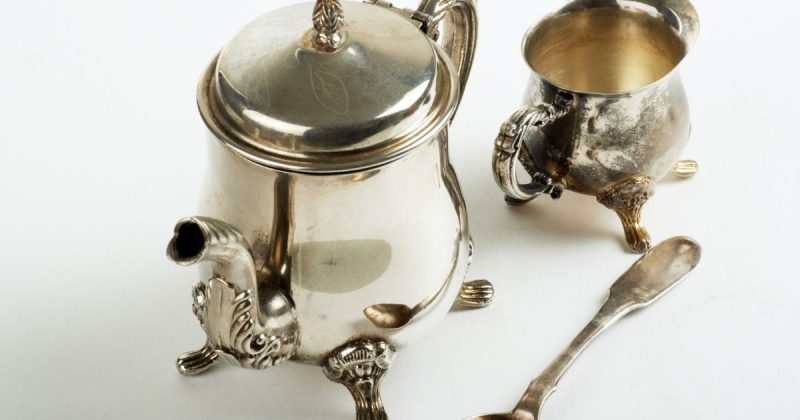
How to Care for Sterling Silver Pieces
Sterling silver is a beautiful and durable metal. However, it does require some care to keep it looking its best. Here are some tips on how to care for your sterling silver jewelry:
- Store your sterling silver jewelry in a cool, dry place. A jewelry box or anti-tarnish pouch will help keep your sterling silver jewelry looking like new.
- Clean your sterling silver jewelry regularly with a mild dish soap mixed together with water. Gently scrub the jewelry with a soft toothbrush to remove dirt and grime. Rinse the jewelry thoroughly with water and dry it with a soft, clean cloth.
- If you notice tarnish build-up on your sterling silver jewelry, you can clean it with a silver polish or a silver cleaning cloth. Be sure to follow the directions on your silver polish or cleaning cloth to avoid damage to your jewelry.
- Avoid exposing your sterling silver jewelry to chemicals, such as chlorine and bleach. These chemicals can cause tarnish build-up on your jewelry.
- Take off your sterling silver jewelry before swimming or bathing. The water can cause tarnish build-up on your jewelry.
- Avoid wearing your sterling silver jewelry while doing activities that are likely to cause it to get scratched or dented, such as gardening or cooking.
When you wear your sterling silver, be mindful of the contact with sunscreen and other chemicals. These will cause it to tarnish more quickly- but don’t worry! It’s not always necessary for us metals lovers spend all our time covered up so we can avoid these things entirely just because they’re likely culprits in accelerated deterioration on any piece that comes into close proximity (which is why cleaning regularly really helps).
Restoring Silver Jewelry
If your sterling silver jewelry is looking dull or tarnished, you can restore its shine with a silver polish or a silver cleaning cloth. Be sure to follow the directions on your silver polish or cleaning cloth to avoid damage to your jewelry. You can also use a toothbrush to gently scrub the jewelry with a mild dish soap mixed together with water. Rinse the jewelry thoroughly with water and dry it with a soft, clean cloth.
If you have pieces that are oxidized, avoid harsh cleaning processes as this will remove the patina and leave your jewelry with a very different appearance. You can clean these types of items using mild dish soap mixed together or regular household cleaner along with toothbrushes to gently scrub off dirt/grime while not scratching its surface- leaving behind beautiful shiny gold color!
Polishing
Polishing is a necessary step in restoring silver, as it removes the tarnish and helps to keep its shine. If you don’t polish your item regularly then eventually all markings will be worn away or removed from any plated surfaces with one scratch after continuous scrubbing efforts; but this process can also strips away some layers which means that more meticulous care must go into polishing items for longevity.
Electrochemical Restoration of Silver
This is a method used to clean and restore silver by using an electrolytic process in which the tarnish is transferred from the silver onto a piece of aluminum. This method should only be used on sterling silver that has not been plated, as the process will remove the silver plating.
To electrochemically clean your sterling silver, you will need:
- A non-reactive metal container (glass, plastic, or ceramic)
- Sterling silver jewelry
- A strip of aluminum foil
- Water
- Baking soda
- An electrical outlet
Connect the positive lead of your power source to the aluminum foil and the negative lead to the sterling silver jewelry. Submerge the jewelry in the water and add baking soda until the water is saturated. Turn on the power source and wait for the reaction to occur. The tarnish will transfer from the silver onto the aluminum foil.
Once the tarnish has been removed, remove the jewelry from the water and rinse it thoroughly with clean water. Dry the jewelry with a soft, clean cloth. Your sterling silver jewelry should now be shiny and free of tarnish.
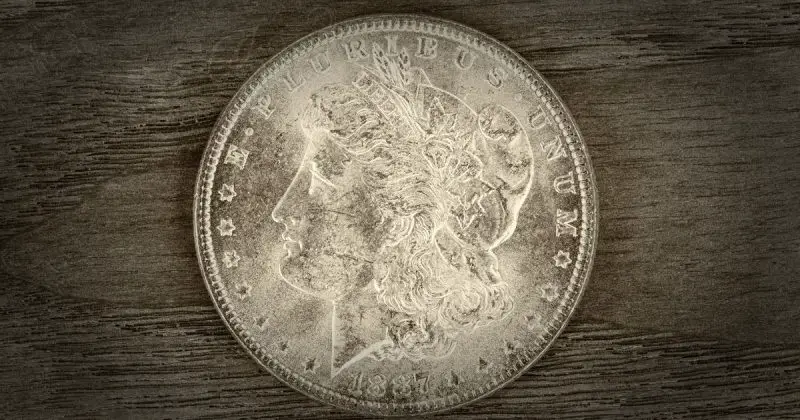
Cleaning Rust on Silver Without Chemicals
The easiest method is to buy an ultrasonic jewelry cleaner, but if you prefer not to use chemicals to clean your silver, there are a few alternative methods that you can use. One method is to clean your silver with toothpaste. Apply a small amount of toothpaste to a soft, clean cloth and rub it into the silver in a circular motion. Rinse the silver with clean water and dry it with a soft, clean cloth.
Another method is to clean your silver with vinegar. Combine equal parts vinegar and water in a bowl and submerge your silver in the mixture. Let the silver soak for a few minutes and then remove it from the bowl. Rinse the silver with clean water and dry it with a soft, clean cloth.
You can also use a mixture of baking soda and water to clean your silver. Combine equal parts baking soda and water in a bowl and stir until the baking soda is dissolved. Submerge your silver in the mixture and let it soak for a few minutes. Remove the silver from the bowl and rinse it thoroughly with clean water. Dry the silver with a soft, clean cloth.
Finally, you can clean your silver with cornstarch. Combine equal parts cornstarch and water in a bowl and stir until the cornstarch is dissolved. Submerge your silver in the mixture and let it soak for a few minutes. Remove the silver from the bowl and rinse it thoroughly with clean water. Dry the silver with a soft, clean cloth.
No matter which method you choose, be sure to rinse your silver thoroughly with clean water to remove any residue from the cleaning agent. Dry your silver with a soft, clean cloth to prevent water spots.
Tarnish Proof Ways to Store Silver
Though you can restore silver nondestructively, it might not always be convenient. And though scrubbing and polishing are simpler than electrochemical restoration process- they’re still labor intensive! Thus we recommend storing our precious metal in a way that prevents tarnishment for as long possible . Here are some tips:
Keep silver in an airtight container when not in use
This is the most obvious way to prevent tarnish, but it’s also the most effective. When oxygen and moisture are prevented from reaching the silver, tarnish simply can’t occur. The best containers for this purpose are zip-top bags, plastic Wrap, or Tupperware-type containers with tight fitting lids. Line these containers with anti-tarnish paper or cloth (available at craft stores) for even better protection.
Store silver in a cool, dry place
Silver should be stored in a cool, dry place to prevent tarnish. A storage closet or cabinet away from windows and heating vents is ideal. If you don’t have a cool, dry place to store your silver, consider investing in a dehumidifier for your home.
Keep silver away from other metals
When stored next to other metals, silver can tarnish more quickly. To prevent this, wrap each piece of silver individually in anti-tarnish paper or cloth before storing it in an airtight container. You can also keep silver away from other metals by storing it in a separate area from your other jewelry and metal objects.
Avoid touching silver as much as possible
The oils from our skin can speed up the tarnishing process, so it’s best to avoid handling silver as much as possible. When you do need to handle silver, be sure to wear gloves or wash your hands thoroughly afterwards.
Polish silver regularly
Regular cleaning and polishing will remove tarnish before it has a chance to build up. This will not only keep your silver looking its best, but it will also extend the time between major cleanings. We recommend polishing silver once a month with a good quality silver polish. Be sure to follow the manufacturer’s instructions carefully and polish in a well-ventilated area.
Acid-Free Tissue Paper and Polythene Bags for Storing Silver
If you’re looking for a long-term storage solution for your silver, consider using acid-free tissue paper and polythene bags. These materials will prevent tarnish by absorbing moisture and oxygen.
To use this method, simply wrap each piece of silver in acid-free tissue paper and place it in a polythene bag. Seal the bag tightly and store it in a cool, dry place. Check on your silver periodically to make sure the tissue paper is still intact. If it starts to deteriorate, simply replace it with fresh tissue paper.
This method is ideal for storing silver that you don’t plan to use often, such as heirloom pieces or family silver. It’s also a good way to store silver if you’re moving house or going on extended vacation.
Sulfur Absorbing Flannel Pouches for Storing Silver
Another long-term storage solution for silver is to use sulfur absorbing flannel pouches. These pouches are made of a specially treated fabric that absorbs sulfur, which can cause silver to tarnish.
To use this method, simply place each piece of silver in a sulfur absorbing pouch and store it in a cool, dry place. Check on your silver periodically to make sure the pouch is still effective. If you notice any tarnish, simply remove the silver from the pouch and polish it with a good quality silver polish.
This method is ideal for storing silver that you don’t plan to use often, such as heirloom pieces or family silver. It’s also a good way to store silver if you’re moving house or going on extended vacation.
Use Silica Gel Packs to Prevent Tarnish
If you’re looking for a short-term storage solution for your silver, consider using silica gel packs. These packs are commonly used to absorb moisture and keep food fresh, but they can also be used to prevent tarnish.
To use this method, simply place each piece of silver in a zip-top bag with a silica gel pack. Seal the bag tightly and store it in a cool, dry place. Check on your silver periodically to make sure the silica gel pack is still effective. If you notice any tarnish, simply remove the silver from the bag and polish it with a good quality silver polish.
This method is ideal for storing silver that you plan to use within the next year or so. It’s also a good way to store silver if you’re moving house or going on extended vacation.
Use Cedar Wood Blocks to Prevent Tarnish
If you’re looking for a natural solution to prevent tarnish, consider using cedar wood blocks. Cedar is a naturally absorbent material that helps to keep silver clean and polished.
To use this method, simply place each piece of silver on a cedar wood block. Store the blocks in a cool, dry place and check on your silver periodically. If you notice any tarnish, simply polish the silver with a good quality silver polish.
Conclusion
Silver is a beautiful material that can add sleekness and shine to any project. It’s also resistant against rusting, so you don’t have worry about it losing its luster over time! However, silver is prone to tarnishing, so it’s important to take steps to prevent tarnish before it starts.
There are a few different ways you can prevent tarnish on your silver. One method is to store your silver in a cool, dry place with sulfur-absorbing flannel pouches or silica gel packs. Another method is to polish your silver regularly with a good quality silver polish. Or, if you’re looking for a natural solution, try using cedar wood blocks.
Whichever method you choose, be sure to check on your silver periodically and polish it as soon as you notice any tarnish. By taking these steps, you can keep your silver looking shiny and new for years to come!
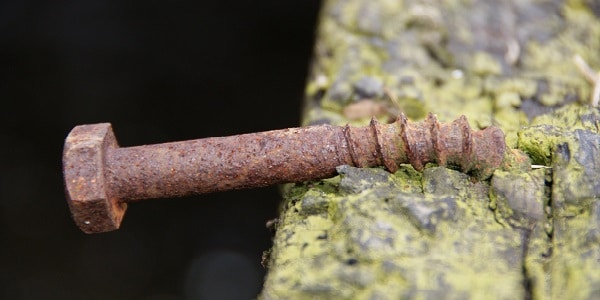



Leave a Reply